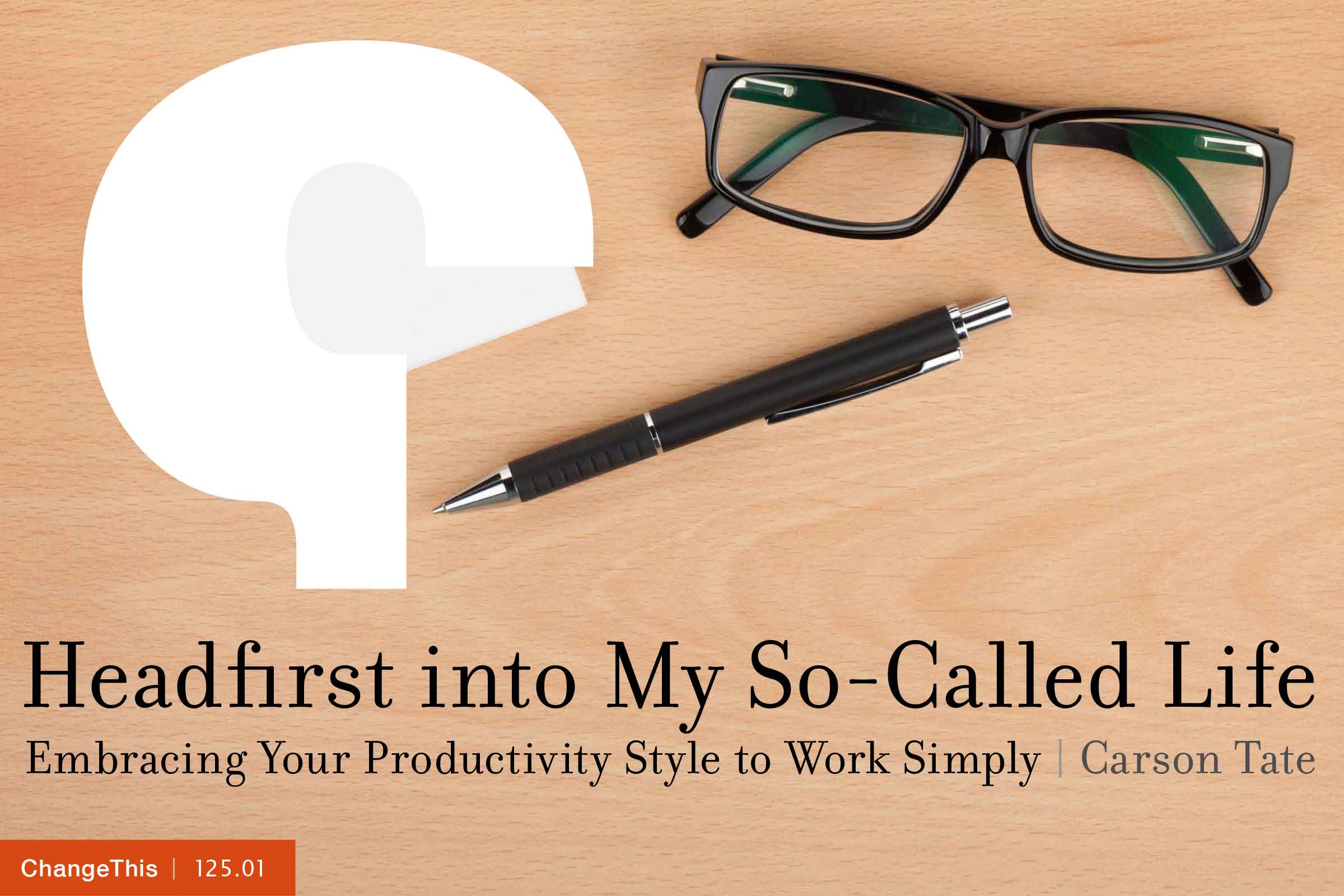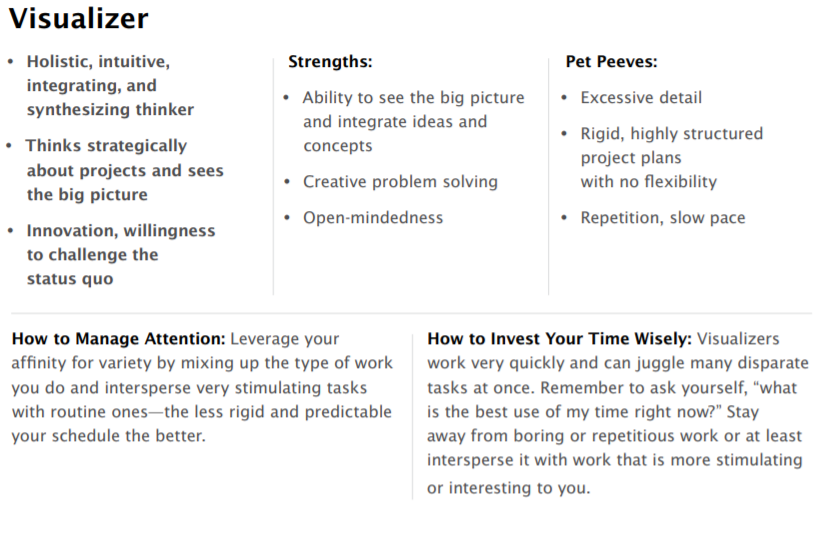Headfirst into My So-Called Life: Embracing Your Productivity Style to Work Simply
 On December 26, I crashed headfirst into the wallof my so-called life.
On December 26, I crashed headfirst into the wallof my so-called life.
That’s when I found myself sitting on the living room floor, staring up at the twinkling lights on the tree, oblivious to the sounds of my daughter from some other room in our house, aching with an inner weariness unlike anything I’d ever experienced before.
This was more than just physical fatigue or sleep deprivation. This was soul fatigue. The image of a successful woman that I’d always carried with me was that of a woman who was smart, driven, professionally accomplished, a Mary Poppins mom, a loving wife, a leader in the community— and someone who makes it all look effortless with her calm, impeccable style. That superwoman was the gold standard I’d spent years trying to live up to. As I sat there on the floor, I remember watching my daughter EC blow out the candle on her first birthday cake. She was the single most important thing in my world—and suddenly I realized I couldn’t remember a single significant detail or moment from her first year. I’d spent the past year frantically racing around the country building my business. And what was the name of that business? Thinking about it, I didn’t know whether to laugh or cry. My company is called Working Simply.
Ironic? Yes, painfully so. But appropriate, too. A wise woman once told me, “We teach what we need to learn the most.” Suddenly I grasped the full truth of that saying.
The next day, I woke up and decided that my busyness was no longer serving me. “Work simply”— the promise I make to my clients—is about more than simply being efficient, well organized, and productive. It’s about moving beyond being busy to reclaim purpose and meaning in life. If you’re reading this article, your efforts to solve your busyness problem have probably not paid off. As a result, you’re probably feeling frustrated. Or worse—you feel like a failure.
Why can’t you stop procrastinating?
Why can’t you get more done?
Why isn’t your inbox under control?
The truth is that the problem is not you. It is how you are trying to overcome your busyness that is the problem.
Time Management Secrets in a Binder
Within weeks of starting my first job out of college, I was sent to the in-house time management training program. Everyone in the entire organization attended the program, which was designed by a world-famous company that specialized in time management strategies. On the first day, the instructor handed out a planner and instructed us to use it to plan our tasks. We were told to prioritize our tasks, using numbers and letters, and record them on the left-hand side of page in the planner on the date when they were to be completed. If a task was not completed on the designated day, we were instructed to move it to the next day by rewriting it on the left-hand side of the next day’s page in the planner.
I dutifully attended the class and used the planner as instructed. But as the weeks went by, I noticed that my productivity hadn’t seemed to improve. The time I spent filling out the pages in the planner felt like a needless waste. And I wasn’t the only one. As I looked around at my
colleagues, I noticed that many of them were really struggling with the system. Busyness, stress, and the feeling of being overwhelmed quickly crept back into our lives.
What happened? Now that we were armed with the secrets of a popular time management program and its specially designed planner, why weren’t we all productive, efficient employees living balanced, purpose-filled lives?
The reason is simple: time management programs do not work.
Time management programs teach a process focused almost entirely on how to plan and exercise control over the amount of time spent on a specific task or activity—to, for example, set aside adequate time to prepare the quarterly sales report before your meeting with your manager. The reason: the erroneous belief that poor allocation of time impairs performance. But this onedimensional approach does not account for the reality of work today, which is multifaceted, fast-paced, and constantly changing.
Time management training is not going to teach you how work more productively. And that explains why time management training, in fact, has not been proven to have a direct impact on performance.
If you want some first-hand evidence, look around you. How many people in your office, in your neighborhood, and at your gym talk about how they are working to manage their time better and then frantically pull out their smart phone, rush to the next project or meeting because they are just so busy?
It’s not time management that impacts productivity; rather, it is our work strategies that impact our productivity. Your work strategy is your approach to planning and allocating effort across goals, activities, and time periods. This approach is usually unconscious and unsystematic rather than deliberate and rational. Nonetheless, patterns can be detected, which generally grow out of your individual cognitive style—your habitual pattern or preferred way of perceiving, processing, and managing information to guide behavior.
Since everyone has a distinctive cognitive style, you also need a unique set of work strategies. It is the personalization of these strategies to suit our individual strengths, preferences, needs, and talents that enables us to be efficient, effective, and work simply.
You cannot outwork your busyness using one-size-fits-all time management solutions. The latest app, prioritization tip, or email management strategy will not work if it is not personalized for you, and aligned with the way you think and process information. Instead it will only create even more frustration, inefficiency, and ineffectiveness.
It is time to let go of the traditional approach to overcoming busyness—time management— and instead embrace the power of your unique cognitive style to guide and inform the choices you make about planning and executing on your daily work. It is time to get personal about
your own productivity.
Personalize Your Productivity
To personalize your productivity you need to first identify your Productivity Style. There are four Productivity Styles: Prioritizer, Planner, Arranger, and Visualizer. We have all four styles within us, but similar to whether you’re left- or right-handed, you have a strong preference for one style. A word of caution: do not pigeonhole yourself. Having seen so many working men and women frustrated and confused by productivity systems designed for other people and imposed on them arbitrarily, the last thing I want to do is to create yet another arbitrary set of rules to serve as a straightjacket for you! The goal is to create a personalized productivity toolkit that is in alignment with the way you think and fully supports you. Let’s explore the four Productivity Styles.




Embrace Your Productivity Style
Busyness is the noise that gets in your way. Turn down the noise. Embrace your Productivity Style. Instead of fighting against your natural wiring, work with it. Use your understanding to guide the choices you make to manage your attention, invest your time, get work done, tame your inbox, and design your work space in ways that are customized for you—not for someone else. Change the ways you work and live so that you can be the best you—creative, productive, energized, and happy. Work simply to live fully.



